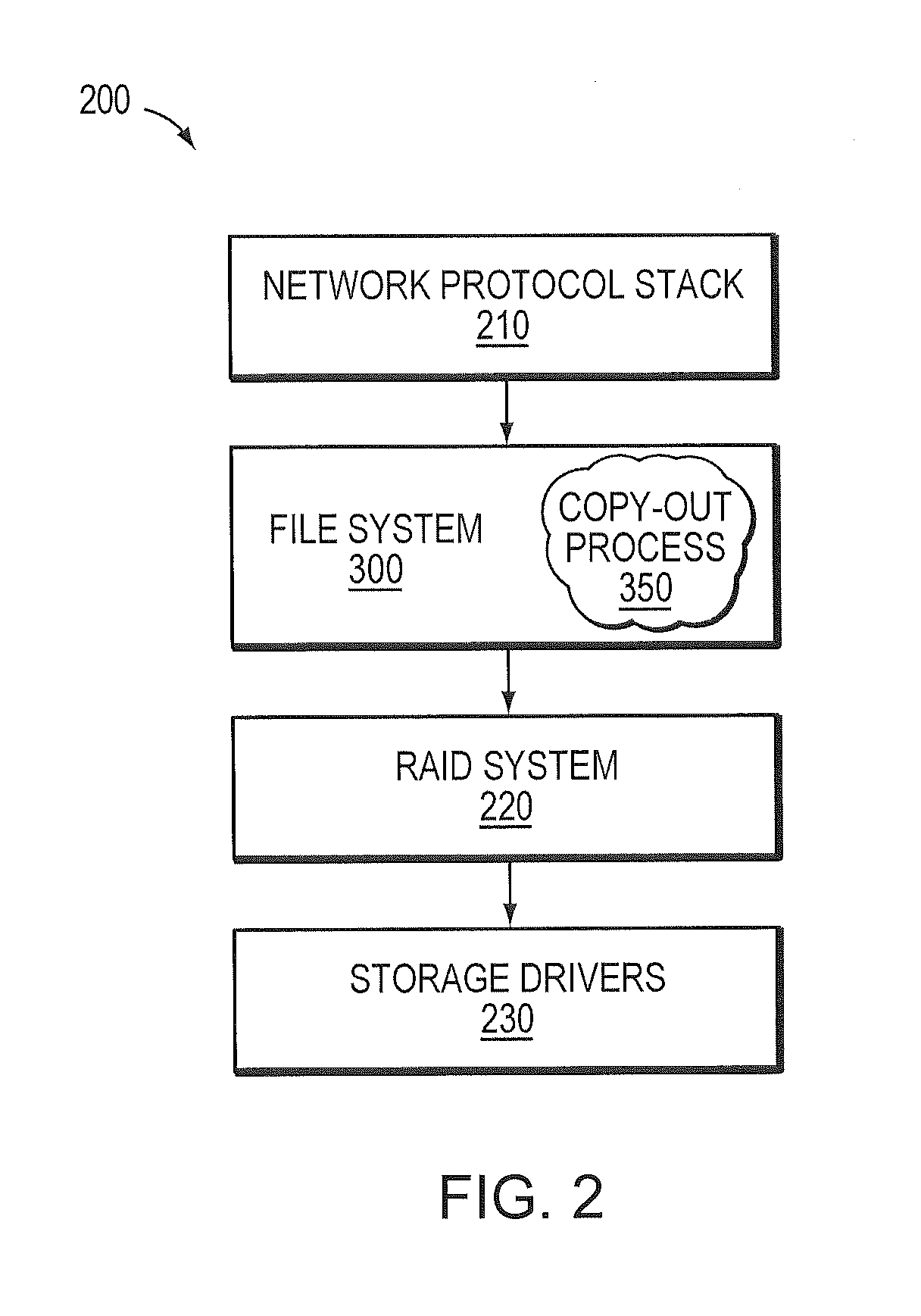File system capable of generating snapshots and providing fast sequential read access
a file system and snapshot technology, applied in the field of file systems, can solve the problems of random relocation of disk blocks, file fragmentation, and high cost of write performance, and achieve the effect of reducing the cost of writing performance, and reducing the cost of writing
- Summary
- Abstract
- Description
- Claims
- Application Information
AI Technical Summary
Benefits of technology
Problems solved by technology
Method used
Image
Examples
Embodiment Construction
[0023]FIG. 1 is a schematic block diagram of an environment 100 including a storage system configured to provide storage services relating to the organization of information on writable persistent storage devices, such as disks 130. The storage system 120 is illustratively embodied as a computer comprising a processor 122, a memory 124, a network adapter 126 and a storage adapter 128 interconnected by a system bus 125. The storage system serves both file and block protocol access to information stored on the storage devices for users (system administrators) and clients of network attached storage (NAS) and storage area network (SAN) deployments. The storage system 120 provides NAS services through a file system and SAN services through SAN virtualization, including logical unit number (lun) emulation.
[0024]The memory 124 comprises storage locations that are addressable by the processor 122 and adapters 126, 128 for storing software programs and data structures associated with the em...
PUM
 Login to View More
Login to View More Abstract
Description
Claims
Application Information
 Login to View More
Login to View More - R&D
- Intellectual Property
- Life Sciences
- Materials
- Tech Scout
- Unparalleled Data Quality
- Higher Quality Content
- 60% Fewer Hallucinations
Browse by: Latest US Patents, China's latest patents, Technical Efficacy Thesaurus, Application Domain, Technology Topic, Popular Technical Reports.
© 2025 PatSnap. All rights reserved.Legal|Privacy policy|Modern Slavery Act Transparency Statement|Sitemap|About US| Contact US: help@patsnap.com



